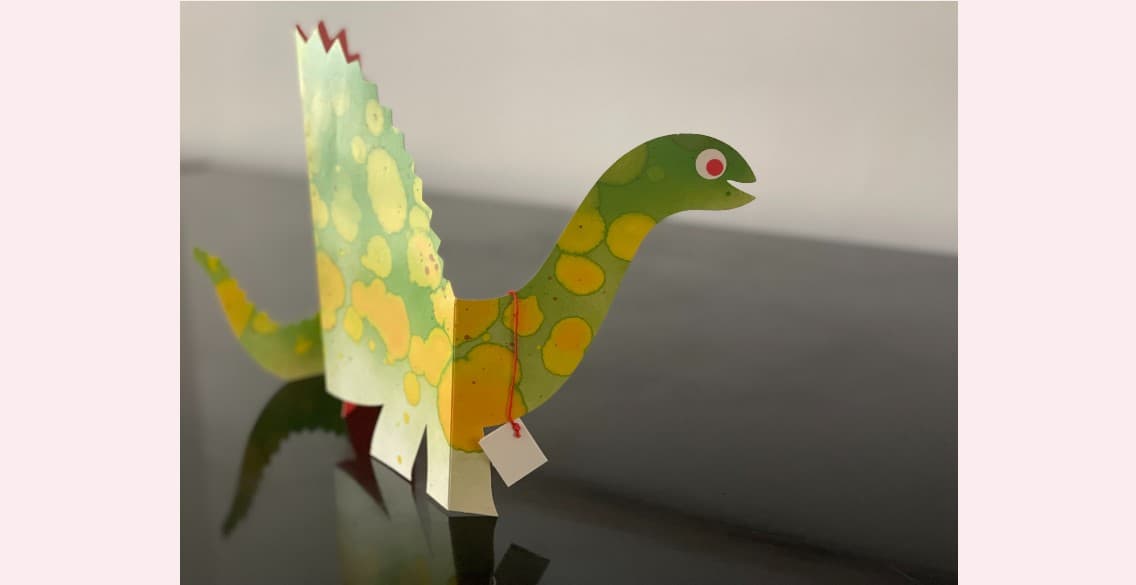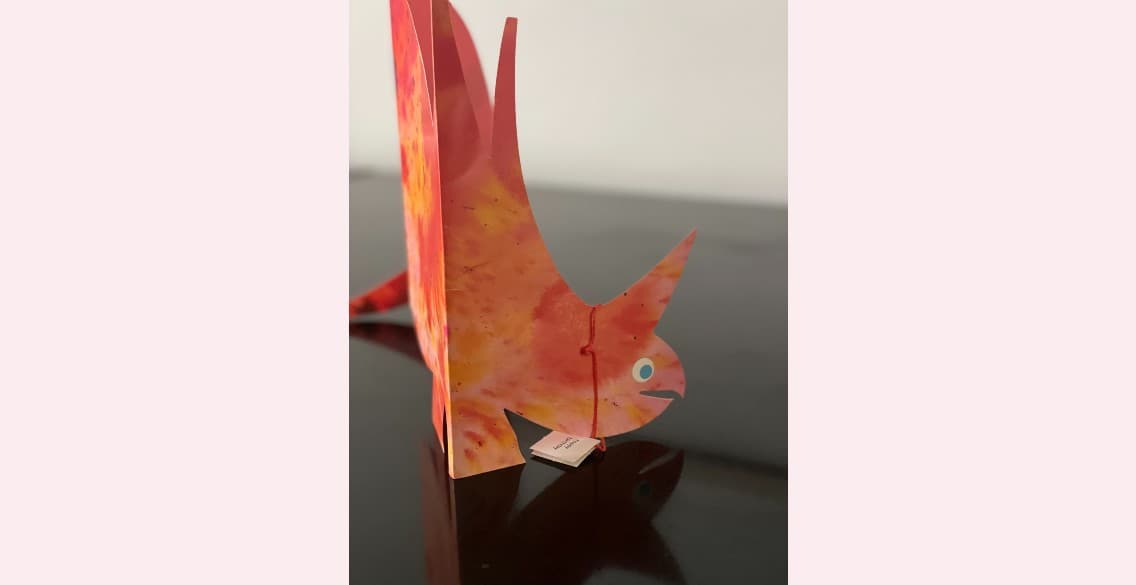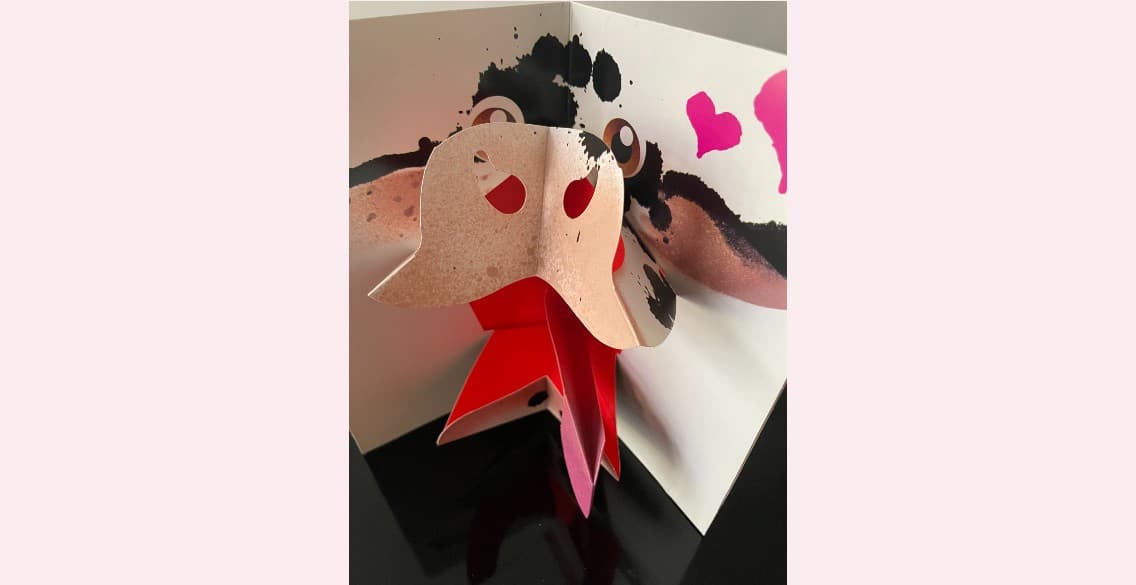Jan Pieńkowski (8.8.1936 – 19.2.22) by Ania Mochlińska-Rakowicz
Not knowing what to expect, I struggled up to the large Victorian house opposite the Thames with a huge portfolio and wearing my best interview suit preparing to meet a renowned celebrity. I was greeted by a chaotic assortment of dogs, chickens and a bearded bare-footed fellow with twinkling eyes and an enchanting giggle. The next few hours were lost in a fog of enthusiasm and exuberance as Jan Pieńkowski discovered all of my past pop-up projects that I had left accidentally in the portfolio, and so began a collaboration that led me to being Jan’s studio assistant, resident paper-engineer, and friend.
Jan was born in Poland in August 1936, the only surviving child of Jerzy, a country squire, and Wanda, a scientist.
Portrait of young Jan Pieńkowski by Jan Kochanowski; image courtesy of janpienkowski.com
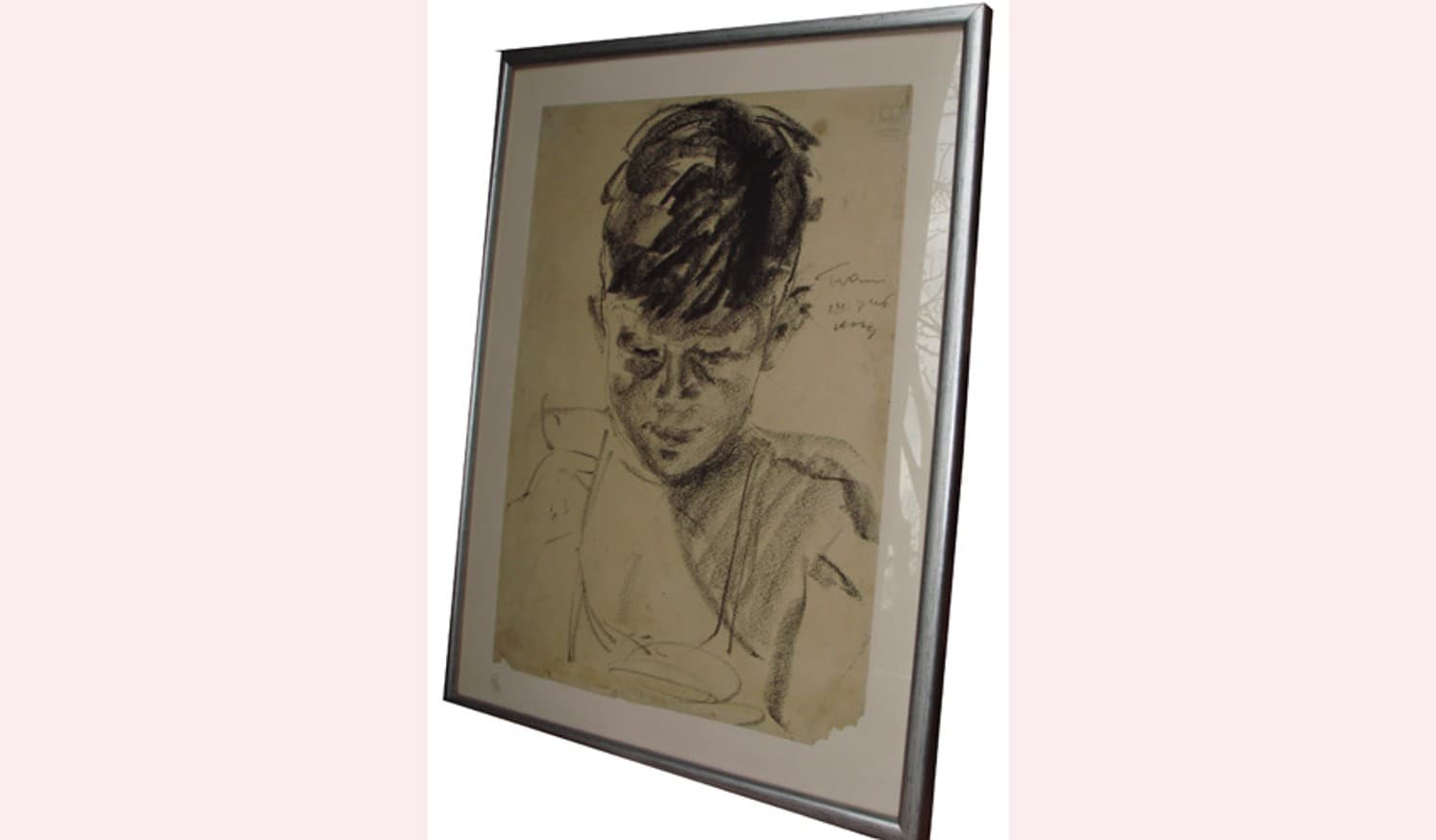
When Nazi Germany and, shortly after, the Soviets invaded Poland, the family left for Warsaw, leaving everything behind. Jerzy was helping to organise resistance groups for the Polish Underground Army known as Armia Krajowa (Home Army) and disappeared for a year, something which had a profound effect on the young Jan.
Reunited again, the family fled Warsaw and travelled through Europe, staying in Bavaria, Vienna, and Italy before finally finding a permanent home in Britain.
Young Jan Pieńkowski with General Anders; image courtesy of janpienkowski.com
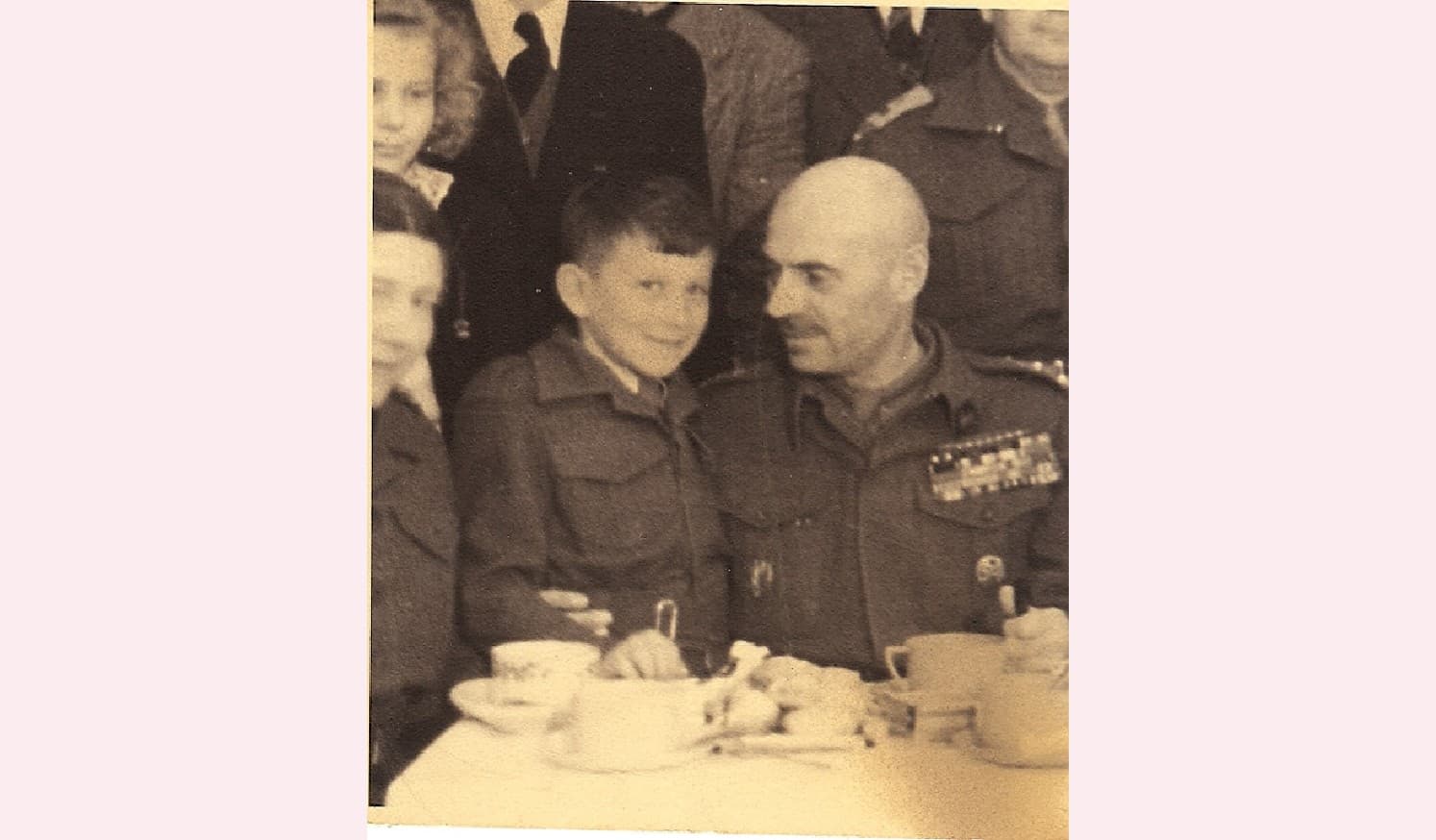
Under Nazi German occupation, schools had been banned in Poland so Wanda, while secretly teaching the local children, also taught Jan. He was fluent in German, Polish and Italian by the time the family reached Britain, quickly adding English to his list of languages. Once in Britain, he was sent to Lucton Boarding School in Herefordshire and then the Cardinal Vaughan Memorial School in London before going to Kings College (Cambridge) to study Classics and English.
While at University, his friend, and later agent Angela Holder persuaded Jan to turn one of the posters he had designed into a greeting card. Not long after, the two founded the now iconic Gallery Five greeting card company which revolutionised an otherwise stale and forgotten genre quite unlike the ubiquitous and multi-million-pound business that it has since become.
Always enthused with the spirit to create, Jan had started designing, drawing and making as a young child, encouraged by his father.
Jan remembered being mesmerised by a Polish soldier cutting figures from paper to entertain everyone in an air-raid shelter during the Second World War and take their minds off the sounds of explosions outside. Inspired, he started making his own cut-outs, turning a traditional form of Polish folk art into creations in his own characteristic style.
It was his collaboration with Joan Aiken which won him the prestigious Kate Greenaway Medal in 1971 for their book The Kingdom Under the Sea, one of four astonishing collections of stories that they created together. While working on his presentation for the first of these books, Jan developed his now much-copied and beautiful silhouette style artwork, bringing together the Polish paper-cutting tradition, the fables and the influence of the “Baba Jaga” stories that he had heard as a child. The result was enchanting.
Many of my friends remember the series Jan created with Helen Nicholl – Meg and Mog – illustrated adventures about a hapless witch and her stripy cat, but it was his pop-up books that enthralled me. Haunted House won Jan his second Kate Greenaway Medal in 1979. Popular in Victorian times, pop-ups had fallen out of fashion until Jan not only revived the genre but also added in his unique blend of humour and creativity.
Jan Pieńkowski pictured in 2015 with artwork for a Meg and Mog book. Photograph by Frank Baron at The Guardian
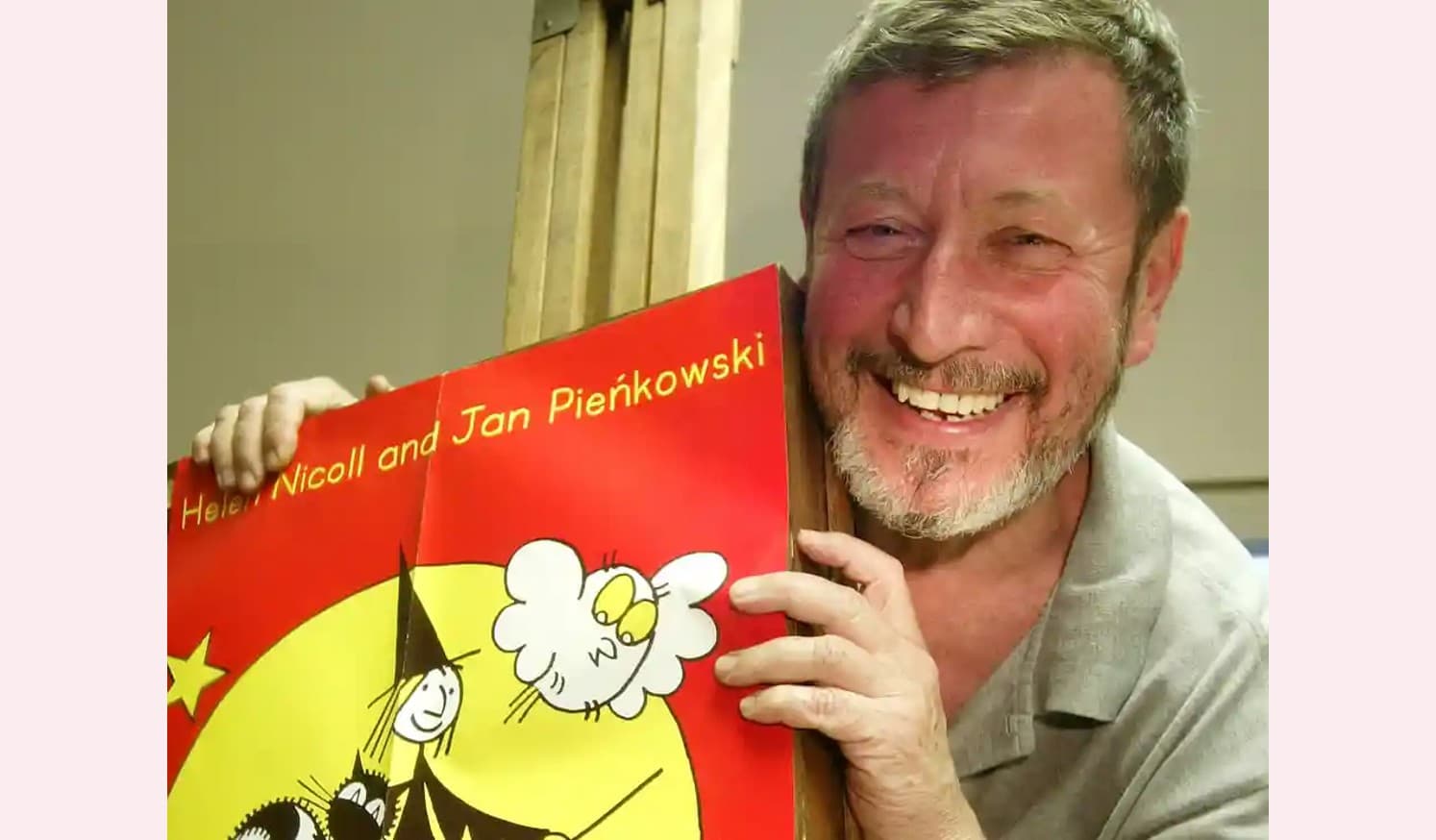
One of the pop-ups in Jan Pieńkowski’s Haunted House award-winning book
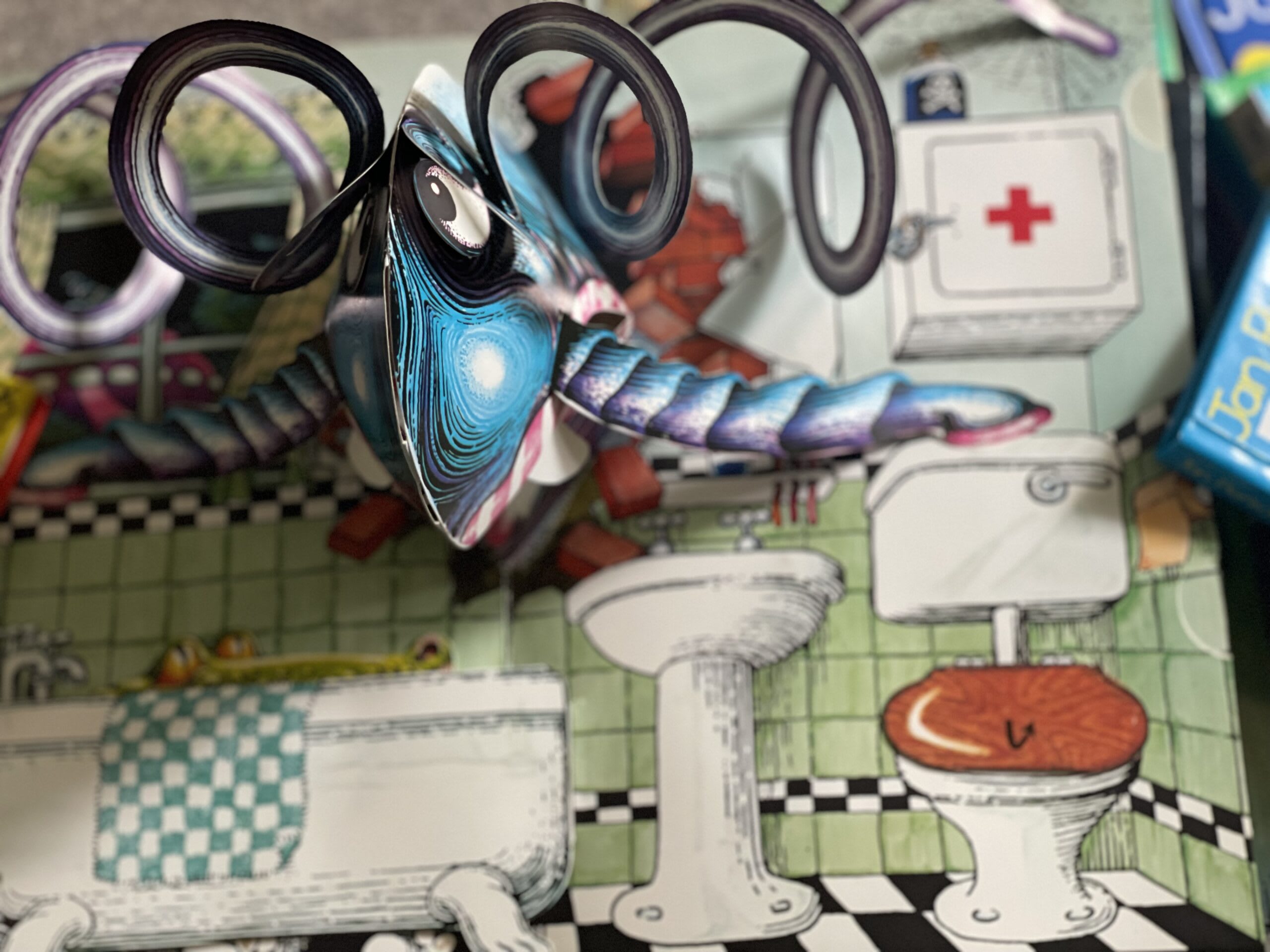
He produced over 140 books for children and young adults, but is not duly credited with being instrumental in starting one of the most powerful revolutions in publishing. While authors, illustrators and creators of books were happy to see their work move through the various stages from concept to sales, Jan’s innate curiosity and care led him to leave for the Far East to see for himself how his books were being assembled in both technical and ethical terms. At that time, publishers simply trusted that the situation in the large printing factories was fair, yet this was far from true. Child labour and poor working conditions later proved to have been the norm. Jan’s insistence on seeing where and how his books were manufactured very quickly changed the way that all books were being produced.
A selection of the many books created by Jan Pieńkowski
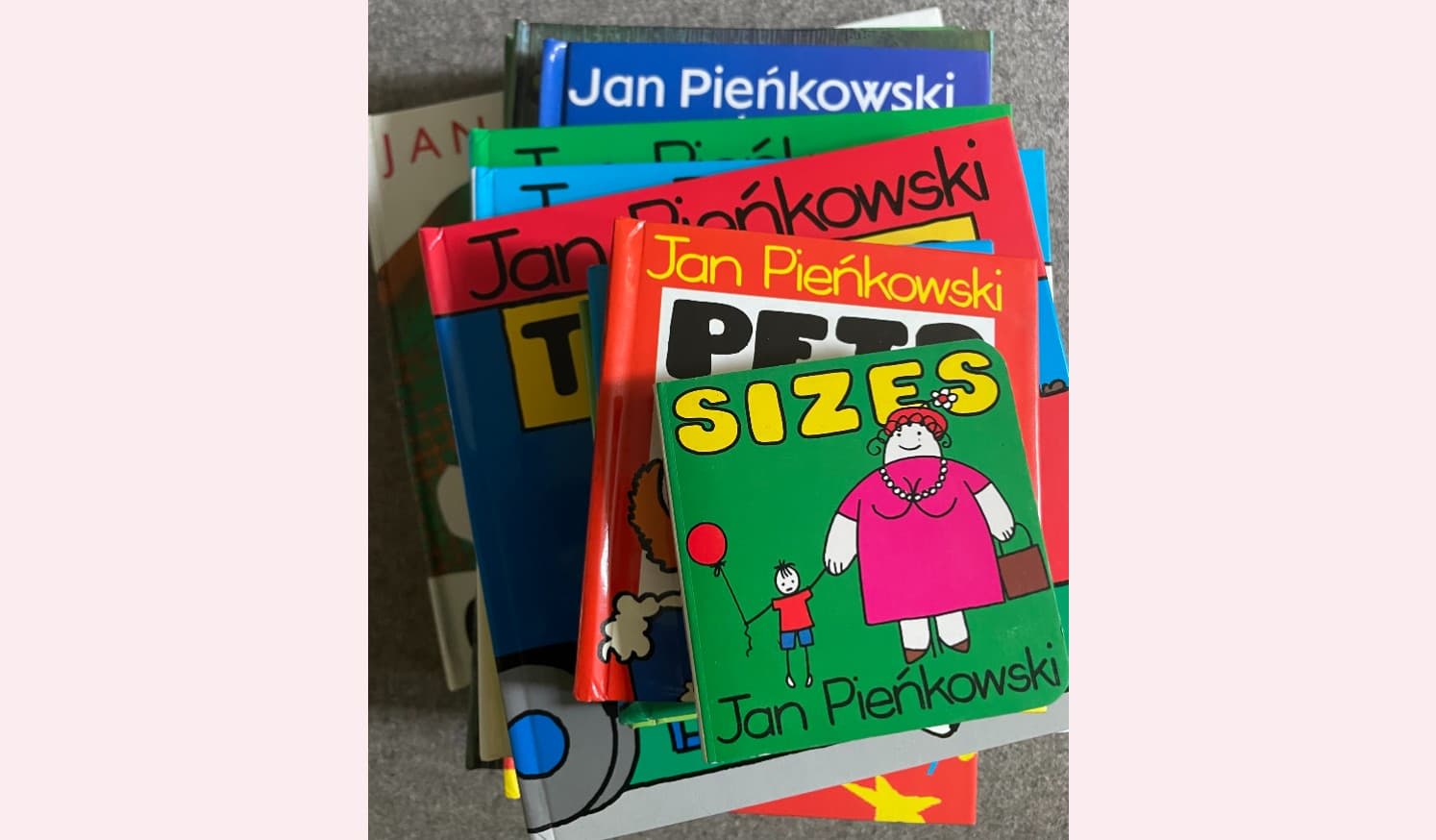
A selection of books created by Jan Pieńkowski
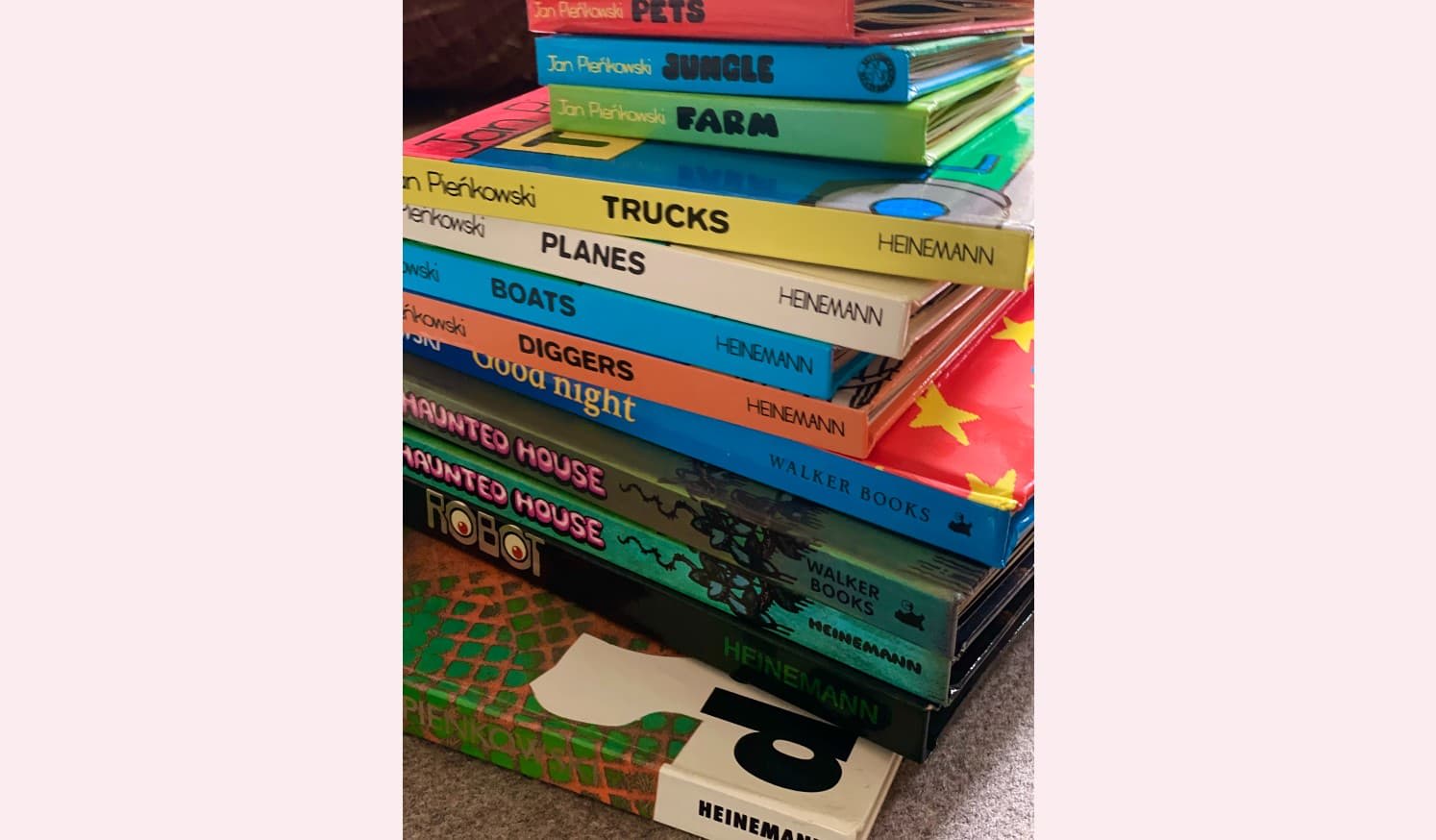
Jan and his partner David’s (David Walser) significant charity work also largely went unnoticed. Deliberately and elegantly silent about this, they were both supportive of many causes, and helped countless individuals through the years wherever and however they could.
Jan was also endlessly generous with his time, fame and artistic ability and frequently developed activities with schools, often creating murals, or paper-cutting projects with the children. No matter how young or old, or whatever their abilities, Jan would always find a connection with the children he would meet and helped to develop their artistic work as well as gain inspiration from them.
When Jan was asked to participate in the Radio 4 programme, Desert Island Disks he was asked to choose a luxury item to take onto the island. He chose a Moleskine sketchbook. His countless sketchbooks were filled with crayon, pencil, paint and charcoal drawings, expressing – through strong strokes – the inspiration he felt through every depicted scene. When he and David went on holiday, they returned without photographs but filled the dining room and studio with the sketches they both did while away. The exclusive ‘private views’ of these temporary exhibitions carried with them the sunshine and flavours of the destinations in a way that photographs never could.
He was never complacent and embraced technology turning every digital development into a way to express his imagination, even creating a series of books with pixilated images as an amusing twist to the problems of high-resolution digital printing.
Jan never lost his love for Poland, returning to visit the country which he had left so many years before, and welcoming any opportunity to speak his first language. The culture influenced his designs, and could be seen in the many traditional Polish images on the walls of his studio. At a time when foreign names weren’t popular, he not only kept his, but also always insisted on the accented letter in his surname being correctly depicted. He cooked Polish dishes, and delighted in the effect that his ‘Chłodnik’ – a traditional pale pink beetroot soup – had on his unsuspecting, non-Polish guests. He carried Poland with him, in his smile, his spirit and his work.
David Walser and Jan Pieńkowski in Warsaw; image courtesy of janpienkowski.com
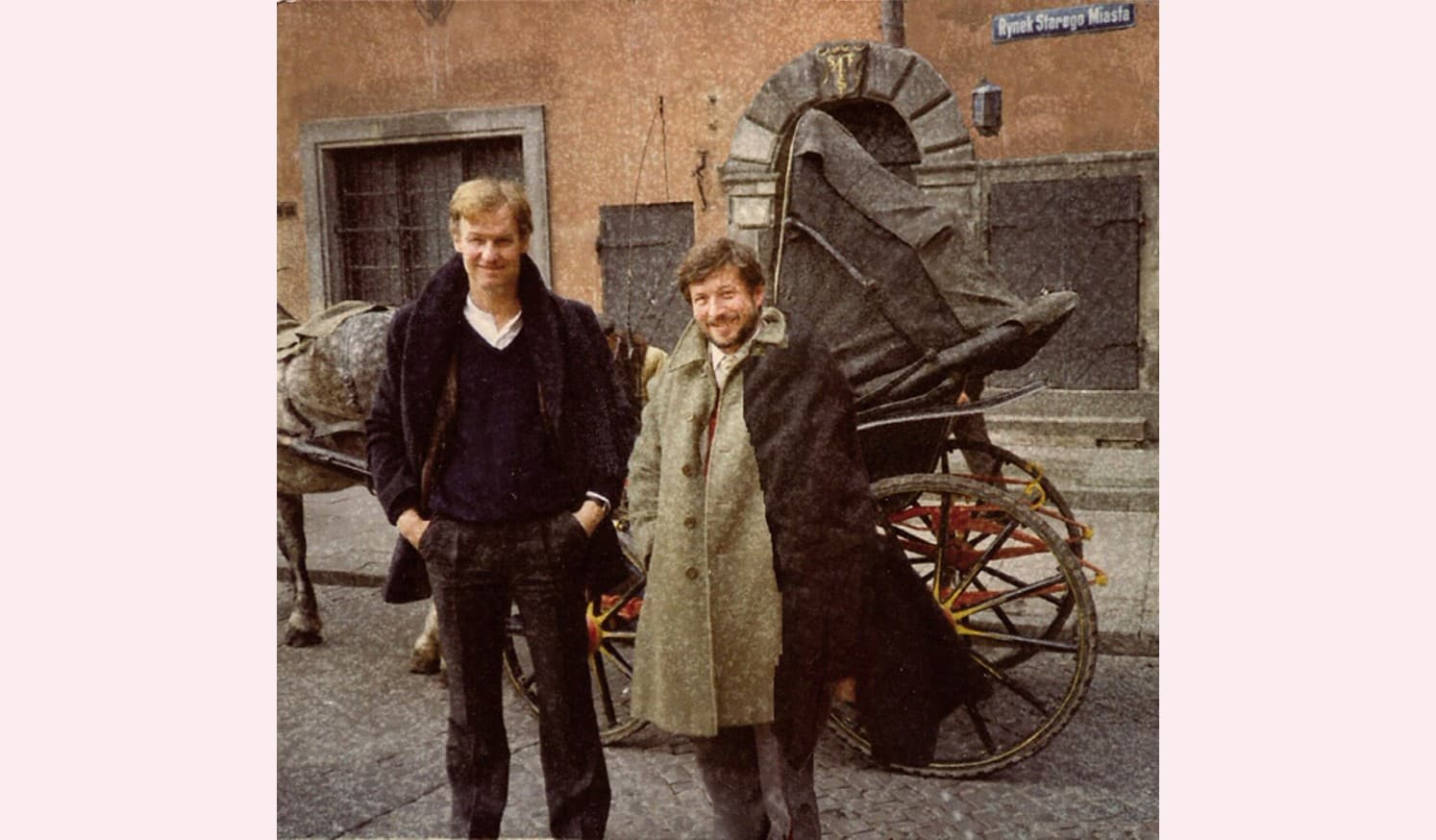
Ferocious intelligence coupled with an enquiring restless mind, enthusiasm and a sense of humour that brought tears of laughter to those with whom he spent his time as well as his extraordinary talent made him a truly unique individual. When you next pick up one of Jan’s books, look again at the images. Search for the tiny hidden mice stealing food from a kitchen in the corner of an illustration, or a fraying electrical cable on the lamp of an old professor in furry slippers, washing hanging on a line across castle turrets breaking real life laundry issues into an otherwise romantic scene, a delighted child swinging from the neck of an Ultrasaurus in a museum. Each tiny detail leads you into another world of imagination and endless possibility. The world of Jan Pieńkowski.
Ania Mochlińska-Rakowicz October 2022
For more information visit Jan Pieńkowski’s website
Ania Mochlińska-Rakowicz is an Art Director, Designer, and Paper Engineer, specialising in management, publishing, events, PR and design. Her background as a paper engineer and designer of pop-ups led her into publishing. For many years she had worked as Art Director in Egmont Children’s Books, Walker Books and Pan Macmillan. Her portfolio includes work for Random House, Eden Project, Pan Macmillan, Roar Publishing, Chronicle Books, Simon and Schuster, Bloomsbury. She is Ognisko’s Vice-Chairman and also sits on its Board of Directors. Ania is Ognisko’s Head of Events, and the Head of PR, Media and Marketing.

